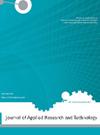An efficient and Highly Scalable Listless SPIHT Image Compression Framework
Q3 Engineering
Journal of Applied Research and Technology
Pub Date : 2022-05-02
DOI:10.22201/icat.24486736e.2022.20.2.1269
引用次数: 1
Abstract
The set partitioning in hierarchical trees is a powerful image compression algorithm. It has reasonable complexity and produces a rate scalable bit-stream. Unfortunately, SPIHT fails to explore the multi-resolution nature of the wavelet transform as the output bit-stream doesn't support resolution scalability. Moreover it requires huge memory and has complex memory management as it depends on utilizing lists with memory of about 2.5 the image size. This paper proposes three related algorithms. The first one modifies SPIHT to reduce its complexity and improve its efficiency especially at low rates. The second is the main contribution of the paper. It provides a simultaneous solution to the memory and scalability problems of SPIHT. Memory is reduced by utilizing status bits of average 2.5 bits per pixel instead of the lists. Resolution scalability is maintained by encoding the resolution levels in increasing order within each coding pass. Another important attribute of our algorithm is that it has very little increment in complexity in comparison with the original SPIHT algorithm. In contrast, the existing solutions have much more complexity, and/or more memory resources. The third has slightly lower complexity and memory than the second but at the same time, it has slightly lower performance.一种高效、可扩展的无列表SPIHT图像压缩框架
层次树中的集合划分是一种强大的图像压缩算法。它具有合理的复杂性,并产生速率可伸缩的比特流。不幸的是,SPIHT未能探索小波变换的多分辨率特性,因为输出比特流不支持分辨率可伸缩性。此外,它需要巨大的内存,并且具有复杂的内存管理,因为它依赖于使用具有大约2.5倍图像大小的内存的列表。本文提出了三种相关的算法。第一种是对SPIHT进行修改,以降低其复杂性并提高其效率,尤其是在低速率下。第二部分是论文的主要贡献。它同时解决了SPIHT的内存和可伸缩性问题。通过使用平均每像素2.5位的状态位而不是列表来减少存储器。通过在每次编码过程中按递增顺序对分辨率级别进行编码,可以保持分辨率的可扩展性。我们算法的另一个重要特性是,与原始SPIHT算法相比,它的复杂性几乎没有增加。相比之下,现有的解决方案具有更多的复杂性和/或更多的内存资源。第三种方法的复杂性和内存略低于第二种方法,但同时性能略低。
本文章由计算机程序翻译,如有差异,请以英文原文为准。
求助全文
约1分钟内获得全文
求助全文
来源期刊

Journal of Applied Research and Technology
工程技术-工程:电子与电气
CiteScore
1.50
自引率
0.00%
发文量
0
审稿时长
6-12 weeks
期刊介绍:
The Journal of Applied Research and Technology (JART) is a bimonthly open access journal that publishes papers on innovative applications, development of new technologies and efficient solutions in engineering, computing and scientific research. JART publishes manuscripts describing original research, with significant results based on experimental, theoretical and numerical work.
The journal does not charge for submission, processing, publication of manuscripts or for color reproduction of photographs.
JART classifies research into the following main fields:
-Material Science:
Biomaterials, carbon, ceramics, composite, metals, polymers, thin films, functional materials and semiconductors.
-Computer Science:
Computer graphics and visualization, programming, human-computer interaction, neural networks, image processing and software engineering.
-Industrial Engineering:
Operations research, systems engineering, management science, complex systems and cybernetics applications and information technologies
-Electronic Engineering:
Solid-state physics, radio engineering, telecommunications, control systems, signal processing, power electronics, electronic devices and circuits and automation.
-Instrumentation engineering and science:
Measurement devices (pressure, temperature, flow, voltage, frequency etc.), precision engineering, medical devices, instrumentation for education (devices and software), sensor technology, mechatronics and robotics.
 求助内容:
求助内容: 应助结果提醒方式:
应助结果提醒方式:


